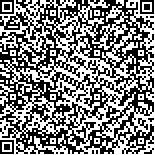| 引用本文: | 徐祥林, 骆海玉, 颜小捷, 卢凤来, 李典鹏.罗汉果内生真菌多样性研究[J].广西植物,2020,40(5):618-627.[点击复制] |
| XU Xianglin, LUO Haiyu, YAN Xiaojie, LU Fenglai, LI Dianpeng.Diversity of endophytic fungi isolated from Siraitia grosvenorii[J].Guihaia,2020,40(5):618-627.[点击复制] |
|
| |
|
|
| 本文已被:浏览 7910次 下载 3365次 |

码上扫一扫! |
|
|
| 罗汉果内生真菌多样性研究 |
|
徐祥林1,2, 骆海玉1, 颜小捷2, 卢凤来2, 李典鹏2*
|
|
1. 广西师范大学 生命科学学院, 广西 桂林 541006;2. 广西植物功能物质研究与利用
重点实验室, 广西壮族自治区
中国科学院 广西植物研究所, 广西 桂林 541006
|
|
| 摘要: |
| 该文采用传统形态学方法结合rDNA-ITS序列分析,对我国重要药用植物罗汉果中的内生真菌进行了鉴定并研究其多样性。结果表明:采用组织培养法从罗汉果健康植株中共分离得到150株内生真菌,包括罗汉果中雌株的内生真菌96株、雄株的内生真菌54株。122株内生真菌经形态学结合rDNA-ITS序列分析鉴定为9个属,均归属为子囊菌门,包含座囊菌纲(Dothideomycetes)和子囊菌纲(Sordariomycetes)。其中,座囊菌纲(Dothideomycetes)真菌包含3科、3属; 子囊菌纲(Sordariomycetes)真菌包含6科、6属。优势属为刺盘孢属(Colletotrichum)和镰刀菌属(Fusarium)。罗汉果雌、雄植株不同组织中内生真菌的定殖率及分离率的变化规律均不相同,雌株中以根中内生真菌的定殖率和分离率最高,叶片中的最低; 在雄株中以叶片中的定殖率和分离率最高,根中的最低。不同菌株在雌、雄两种植株的不同组织中的分布均不同,结合内生真菌群落组成的相似性比较结果,表明部分内生真菌对罗汉果雌株和雄株,以及同一植株中的不同组织均具有偏好性。不同组织中内生真菌的多样性指数在0.11~0.69的范围,其中雌株根部的内生真菌多样性指数最高。以上研究结果为后期探究内生真菌与罗汉果互作关系奠定了基础。 |
| 关键词: 内生真菌, 定殖率, 分离率, 相对频率, 多样性指数, 相似性 |
| DOI:10.11931/guihaia.gxzw201901057 |
| 分类号:Q939.99 |
| 文章编号:1000-3142(2020)05-0618-10 |
| 基金项目:国家自然科学基金(21562009); 广西重点研发项目(桂科AB16380108); 桂林市重大专项项目(20170303); 广西中青年教师基础能力提升项目(2017KY0080)[Supported by the National Natural Science Foundation of China(21562009); Key Research and Development Program of Guangxi(AB16380108); Special Major Program of Guilin(20170303); Guangxi Program for Youth and Middle-Aged Basic Ability Promotion Program(2017KY0080)]。 |
|
| Diversity of endophytic fungi isolated from Siraitia grosvenorii |
|
XU Xianglin1,2, LUO Haiyu1, YAN Xiaojie2, LU Fenglai2, LI Dianpeng2*
|
|
1. College of Life Sciences, Guangxi Normal University, Guilin 541004, Guangxi, China;2. Guangxi Key Laboratory of Functional
Phytochemicals Research and Utilization, Guangxi Zhuang Autonomous Region and Chinese Academy of Sciences,
Guangxi Institute of Botany, Guilin 541006, Guangxi, China
1. College of Life Sciences, Guangxi Normal University, Guilin 541004, Guangxi, China; 2. Guangxi Key Laboratory of Functional
Phytochemicals Research and Utilization, Guangxi Zhuang Autonomous Region and Chinese Academy of Sciences,
Guangxi Institute of Botany, Guilin 541006, Guangxi, China
|
| Abstract: |
| Involved in the biological co-existence, endophytic fungi can confer adaptative advantages to the plant host, such as enhance growth, competitiveness, and induce stress tolerance and the producing of bioactive metabolites of the host plant, displaying an important role in biocontrol of plant diseases. There are many species of endophytic fungi in plants. The identification based on amplification and sequencing analysis of ITS gene, combined with traditional morphological identification methods, could fast and effectively identify endophytic fungi. In this study, the identification as well as the diversity of endophytic fungi isolated from Siraitia grosvenorii were studied. The results were as follows: A total of 150 endophytic fungi were obtained by a tissue culture method, including 96 and 54 fungal isolates respectively isolated from pistillate plant and staminiferous plant of S. grosvenorii. Among them, 122 isolates were classified into nine genera based on the morphology identification and sequencing analysis of ITS gene, which belong to phylum Ascomycota, including Dothideomycetes and Sordariomycetes. Dothideomycetes contained three families and three genera, and Sordariomycetes contains six families and six genera. The most frequent genera were Colletotrichum and Fusarium. There were different colonization rates and isolation rates between pistillate plant and staminiferous plant of S. grosvenorii, i.e., in the pistillate plant, the root possessed the highest colonization rate and isolation rate, while the leaves possessed the lowest. The opposite happened in staminiferous plant. Additionally, distributions of endophytic fungi were different in different tissues of both pistillate plant and staminiferous plant of S. grosvenorii. Combined with the similarities of community composition of endophytic fungi in different tissues, the results indicate that endophytic fungi have the hosts and tissues preferences. The diversity indices of endophytic fungi in different tissues ranged from 0.11 to 0.69, among which the root of pistillate plant had the highest diversity indices. |
| Key words: endophytic fungi, colonization rate, isolation rate, relative frequency, Shannon-Weiner(H'), similarity |
|
|
|
|
|